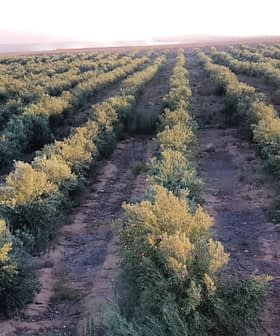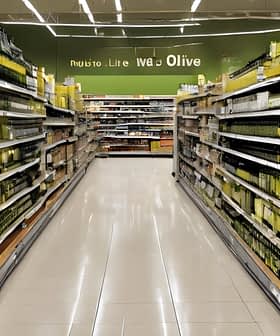With the harvest in full swing, officials in Iran expect the Central Asian country to produce between 155,000 tons and a record-high 200,000 tons of olives in the 2022/23 crop year.
While about half of this total will be used for table olives and other olive-based products, 100,000 tons are expected to be transformed into a record-high 17,000 tons of olive oil.
If it comes to fruition, this year’s olive oil yield would significantly eclipse both last year’s harvest of 10,000 tons and the rolling five-year average of 9,600 tons.
See Also:2022 Harvest UpdatesFarmers in Zanjan province, Iran’s largest olive-growing region located in the northwest of the country, told local media they expect to produce 100,000 tons of olives this year, four times the total harvested in previous years.
Meanwhile, in the southeastern province of Sistan and Baluchistan, farmers are only anticipating a harvest of 300 tons of olives but said oil accumulation levels are some of the highest they have seen. As a result, they expect a higher olive oil yield than usual.
Javad Mir-Arab Razi, the head of the Iranian agriculture ministry’s olive project and the Iranian delegation to the International Olive Council, attributed this increase to the steady rise in olive tree cultivation in the country.
Mir-Arab Razi has spent the last few years encouraging farmers to plant more olive trees along the country’s northern coast with the Caspian Sea specifically for oil production.
He anticipates olive production will continue to climb as 4,000 additional hectares of trees planted last year enter maturity.
In Qazvin province, the second-largest olive-growing region in the country located east of Zanjan, producers anticipate a harvest of 40,000 tons, similar to previous years.
Recognizing the growing trend of olive production in the region, local authorities said they planned to invest in planting modern olive groves and updating existing milling infrastructure.
Mir-Arab Razi said the goal of ramping up olive oil production is to increase Iran’s agricultural export revenue. The country’s agricultural sector has become a significant source of bringing hard currency to Iran after the United States imposed additional sanctions on its petroleum exports in 2018.
However, some farmers worry that the bumper olive harvest will result in lower prices for producers.
To address these concerns, Mir-Arab Razi hopes to increase domestic olive oil consumption. According to the International Olive Council, Iran consumed 12,000 tons of olive oil in the 2021/22 crop year.
Mir-Arab Razi hopes rising national production can increase domestic consumption to 18,000 tons in the coming years.








